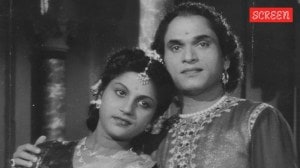Massage mystique
The touch business is booming. From physiology centres to new-age gymnasiums and holistic centres to beauty parlours for the well-heeled, al...

The touch business is booming. From physiology centres to new-age gymnasiums and holistic centres to beauty parlours for the well-heeled, all are full of stressed-out strivers and sole-weary shoppers who drop in, stay fully dressed, and quickly unkink with a 10-minute foot or back rub. Soothing the weary soul (or sore hamstring) is one thing, treating post-mastectomy patients is a considerably more complex understanding. An educated touch feels good. But in what form? Swedish or shiatsu? Reiki or reflexology?
Eastern medicine’s theories about meridians, energy flow and the inter-correctedness of distant body parts can leave Westernised minds reeling. For a massage to be effective, must it be backed by hard science? Or is it that bodywork is just one healthy part of a larger belief system? Read on.
Bodywork benefits
Athletes believe in massage. In fact, the prevailing image of competitors these days is of pampered, stroked, soaked and pummelled bodies, especially oiled and primed for peakprofessionals, Saturday athletes and fans of holistic health practitioners who account for a bulk of the new massage converts.
"There are very real benefits of massage," says Poonam Chandra, fitness manager, Taj Mahal Hotel. "One of the chief ones is physiological. The touch of a hand is a soothing encounter." The long gliding motion and therapeutic rubbing strokes found in most fullbody rubdowns are techniques derived from Swedish massage. Facial massage, lymphatic drainage and polarity therapy — all employ similar motions.
Acupressure (shiatsu or trigger-point treatment), on the other end of the spectrum, uses direct finger pressure (and sometimes the therapist’s elbows or knee) with varying degrees of intensity on specific problem areas. Many currently popular forms of bodywork, like sports massage, often include both — freely mixing techniques based on centuries-old Eastern methods with modern Western knowledge of physiology.
"Feel good" therapies (facials or foot rubs, aromatherapy, beauty bodywraps) are, by definition, almost always gentle manipulations of the skin and superficial muscle layers. Therapeutic massages dig deeper into muscle and tissue, relaxing muscle fibres and increasing blood flow.
But consult your doctor before beginning a massage regimen just as you would do before starting any new physical activity, especially if you are pregnant. For anyone with the following conditions, massage may not be appropriate: thrombosis, cardiovascular disease, cancer, AIDS, boils or other skin infections, lumps or recent scar tissue and even acute back pain.
Massage as medicine
Inherent in all schools of thought is a basic reality: stimulated blood flow delivers nutrients to cells more efficiently, helping heal tiny muscular tears and ease physical aches. Certain stress hormones, like cortisol, may decrease, while endorphins, the body’s own natural narcotics, are released to moderate pain, elevate mood and create feelings of well-being.
In hospitals, massage techniques may be used asadjunct therapy for underweight newborns and for drug or alcohol rehabilitative patients. In one recent US study, massage was shown to significantly ease depression and anxiety among hospitalised bone-marrow transplant recipients. Research is on to see whether bodywork therapy boosts the immune systems of AIDS patients, reduce the itching of burn victims and relieve insomnia.
Select therapists are working with psychiatrists to help sufferers of sexual abuse; the introduction of the healthy human touch helps teach the satisfying pleasures of nurturing contact and leads victims to greater levels of acceptance of their bodies. "Massage was once more or less ridiculed by the medical community. But isn’t any more," says P K Prabhakar, head, Institute for Physically Handicapped. Different Strokes
With just three ingredients and five moves, anyone can give a devastatingly, luxuriant massage.



- 01
- 02
- 03
- 04
- 05




























